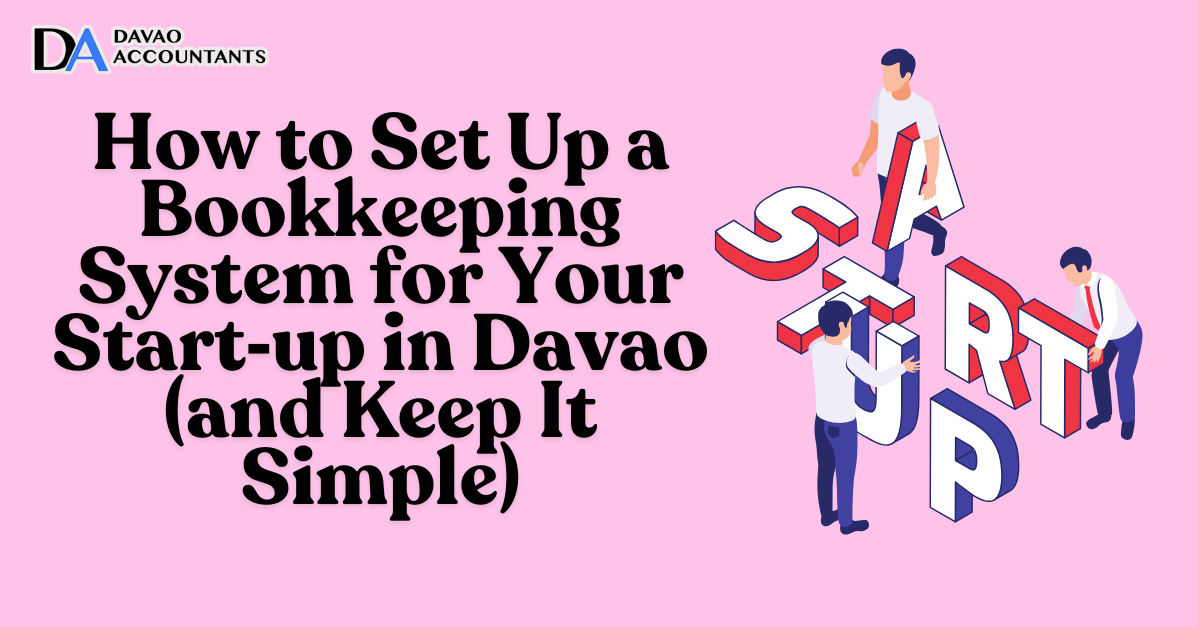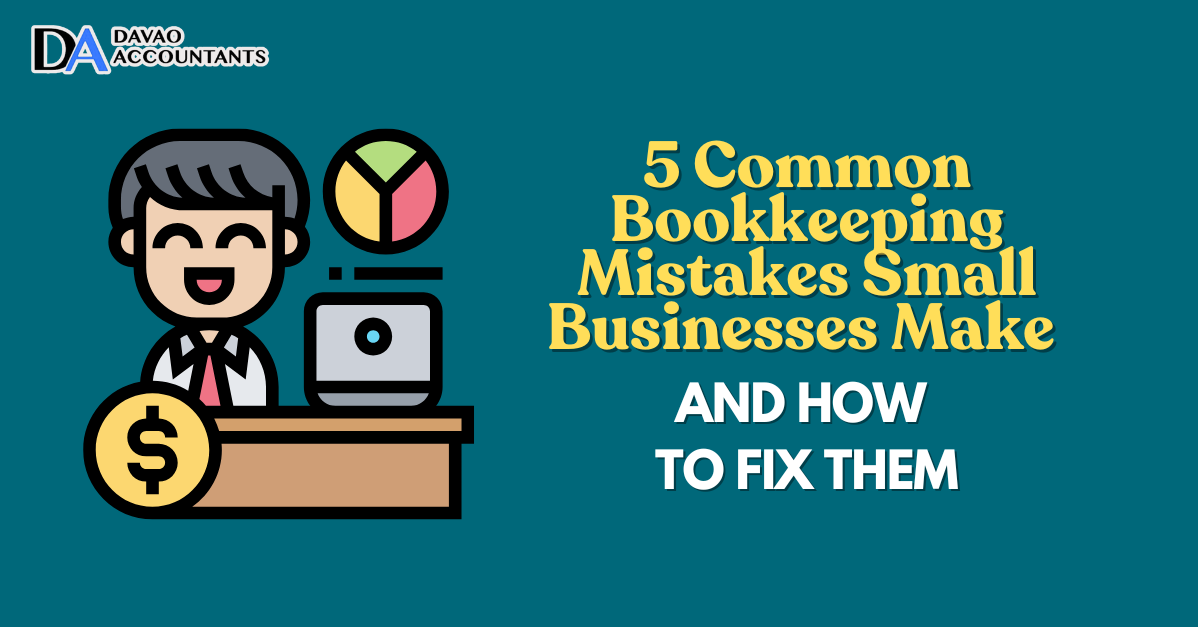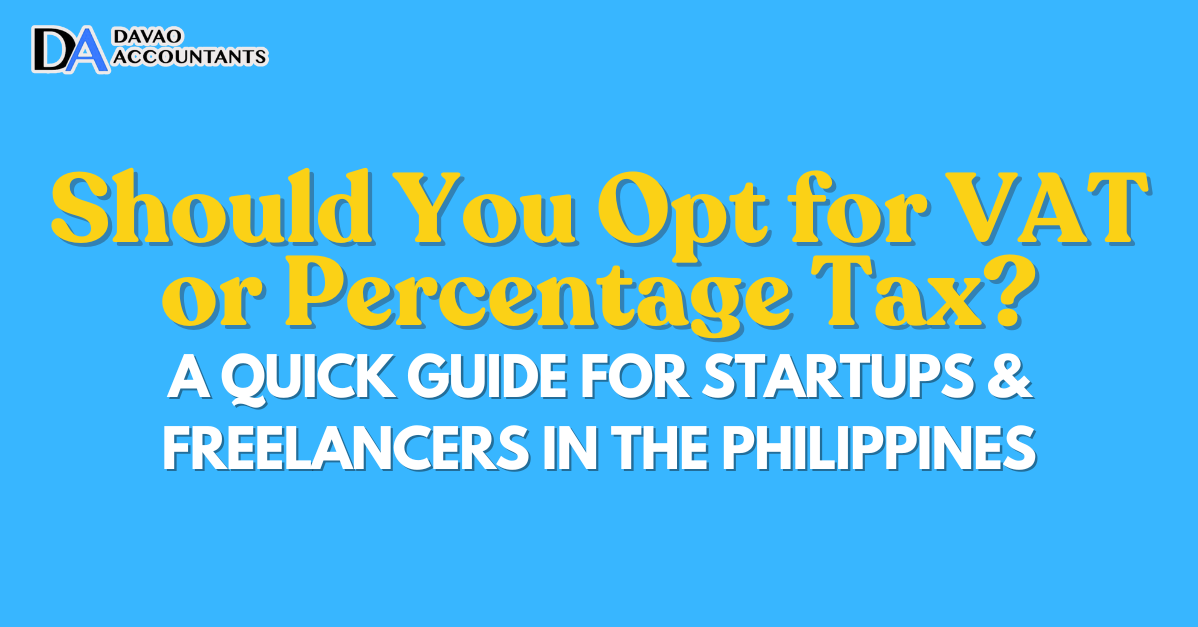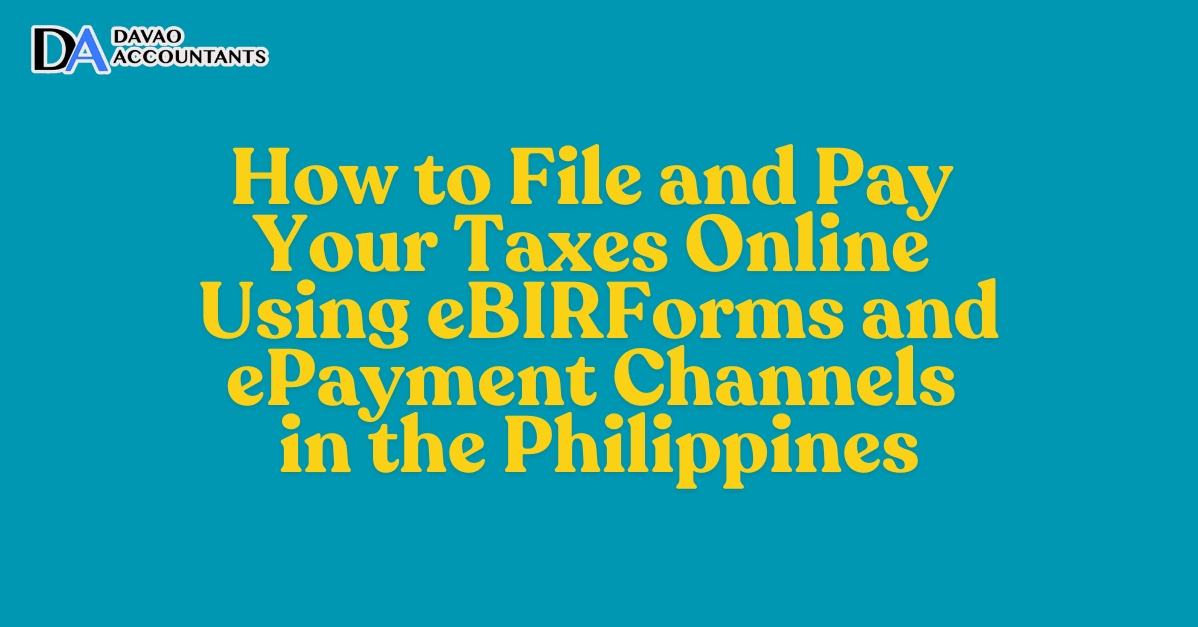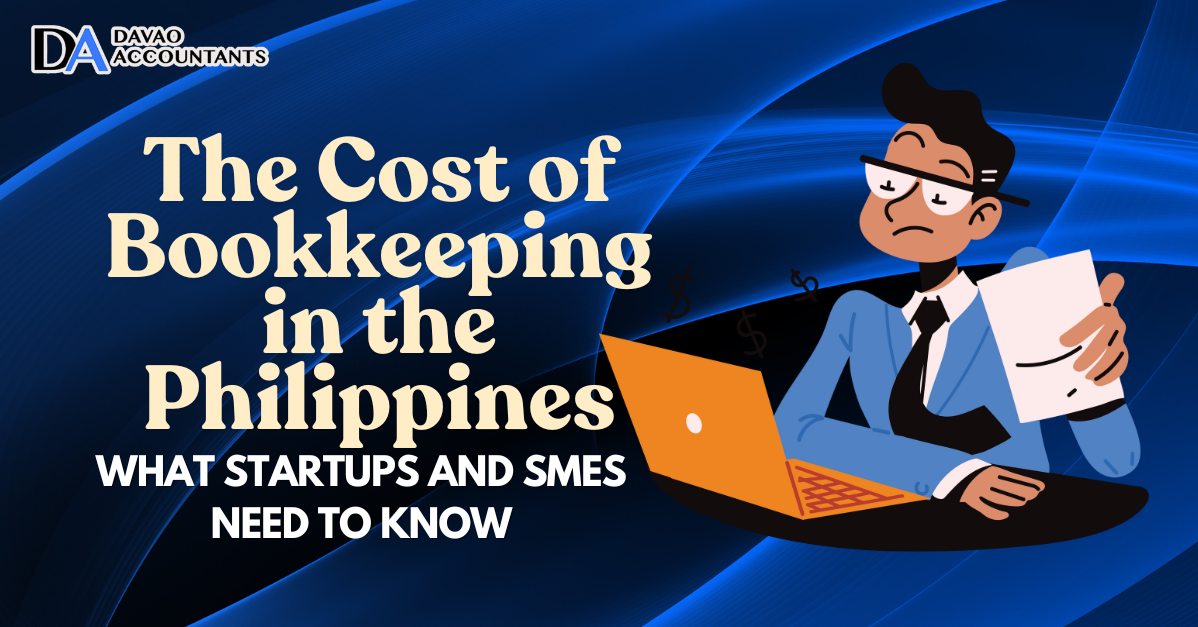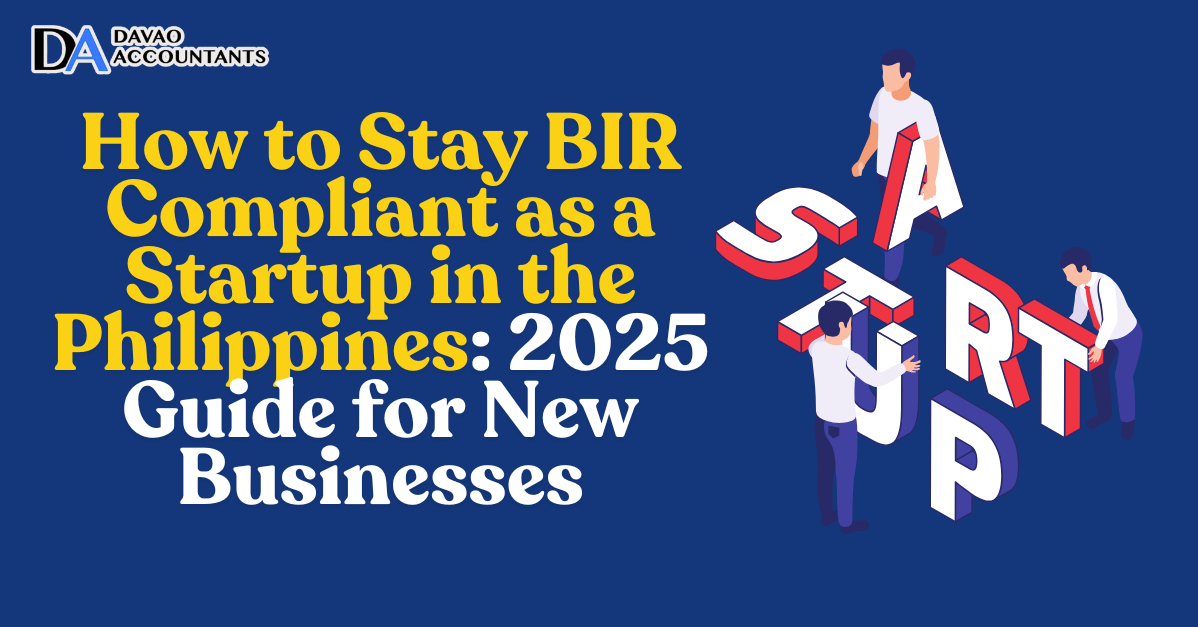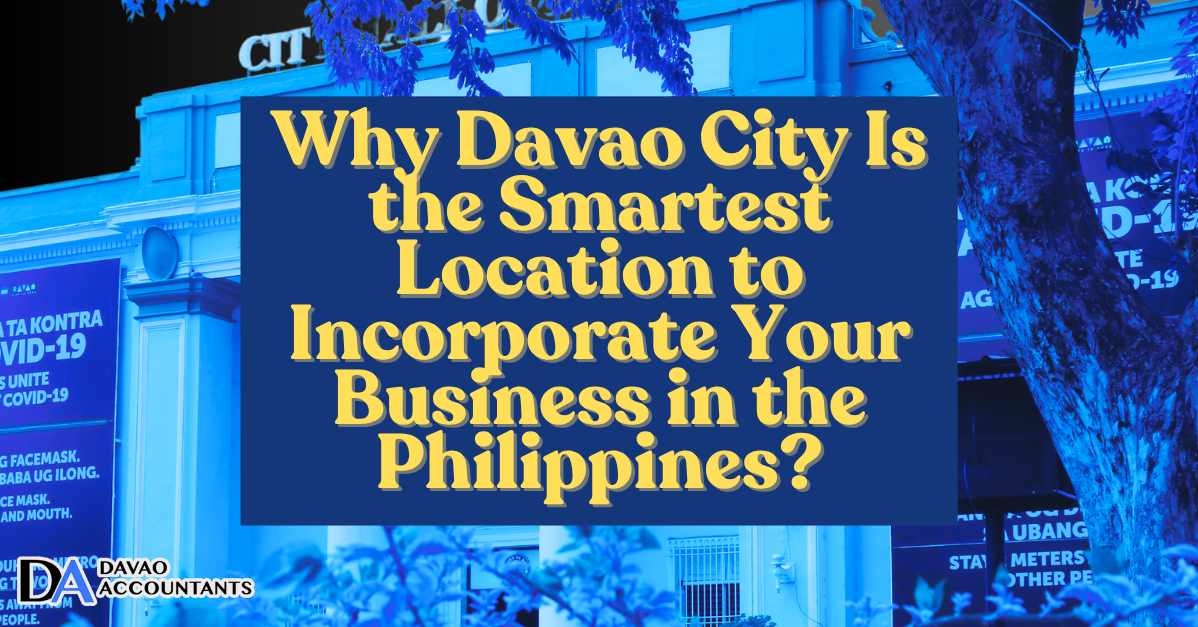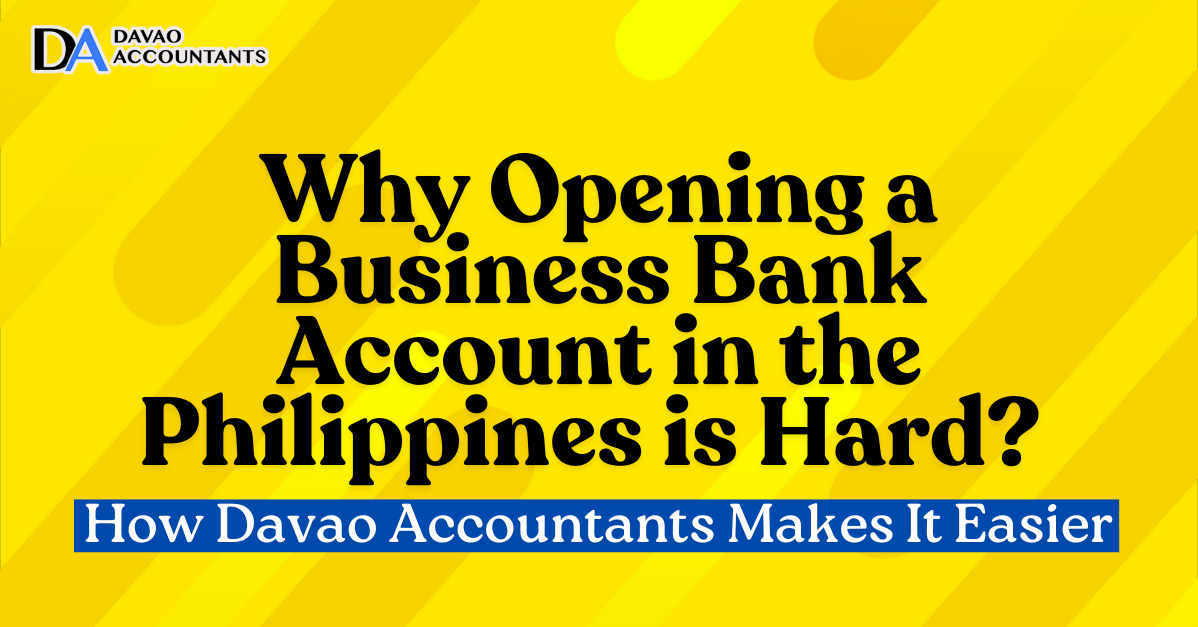Table of Contents
Toggle
Introduction
If you run a startup, freelance business or a small enterprise in the Philippines, one of the key decisions you’ll face from the start is how you should be registered for indirect taxes, in particular whether you will fall under the 12% Value‑Added Tax (VAT) regime or pay a simpler Percentage Tax (sometimes referred to as “non‑VAT” tax).
This decision can affect your pricing, costs, compliance burden, and cash flow. In this article, we at Davao Accountants will guide you through the key differences, eligibility rules, pros & cons, and decision factors, so you can determine which route best suits your business.
What are VAT and Percentage Tax?
VAT (Value‑Added Tax)
In the Philippines, VAT is the primary indirect tax applied to the sale, barter, exchange, or lease of goods and properties, as well as to the rendering of services (including digital services) carried out in the course of business. The standard rate is typically 12%. A VAT‑registered taxpayer may charge VAT to its customers (output VAT) and deduct or claim credit for VAT paid on purchases (input VAT).
Percentage Tax (Non‑VAT Tax)
Percentage Tax is a business tax imposed on persons, entities, or transactions that are not subject to VAT. It is based on a percentage of gross sales or receipts (or other base) rather than net income. For example, businesses whose gross sales or receipts do not exceed ₱3 million may be subject to Percentage Tax rather than VAT.
Thus, the decision often comes down to whether your business will be VAT-registered (with output and input VAT mechanics) or remain under the simpler Percentage Tax regime (and not charge VAT). Each has advantages and trade‑offs.
Eligibility & Registration Rules
When must you register for VAT?
Under current rules, if your business’ gross annual sales or receipts exceed the threshold of ₱3,000,000, you are required to register for VAT. Also, you may voluntarily opt to register for VAT even if you haven’t exceeded the threshold yet (if it makes business sense).
When do you remain under the Percentage Tax?
If your gross annual sales or receipts stay below ₱3 million (and you do not opt for VAT), you may operate under the Percentage Tax regime. Additionally, businesses engaged in certain types of operations may be required by law to pay the Percentage Tax.
Key Summary Table
| Tax Regime | Gross Sales/Receipts Threshold | Key Condition |
|---|---|---|
| VAT | Exceeds ₱3 million annually | Must register (or voluntarily) |
| Percentage Tax | Does not exceed ₱3 million annually | Simpler tax regime, non‑VAT status |
Comparing VAT vs Percentage Tax – Pros and Cons
Pros of VAT
- You can claim input VAT – meaning the VAT you paid on business purchases can reduce the VAT you remit.
- If your clients are themselves VAT‑registered, being VAT‑registered may make your services more attractive (they can claim input VAT).
Cons of VAT
- Administrative burden: you must keep more detailed records (input/output VAT), file monthly/quarterly VAT returns, and issue VAT invoices/receipts.
- If you don’t have many input VAT purchases to offset, the 12% VAT collection may push up your price or reduce your margin.
- If your sales are mostly non‑VATable (exempt) or you serve many non‑VAT clients, the advantage of input VAT may be limited.
Pros of Percentage Tax
- Simpler: you pay a flat percentage on gross sales/receipts (or whatever base applies) without the complexity of input/output VAT mechanics.
- Lower compliance cost and simpler bookkeeping – attractive for small businesses, startups, freelancers.
- If your gross sales are well below the threshold and you don’t have many VAT‑deductible inputs, this may be more efficient.
Cons of Percentage Tax
- No input VAT credit – you cannot deduct VAT you may have paid on purchases. That may make your effective cost higher.
- If your business grows beyond the threshold, you’ll have to transition to VAT, which may incur adjustments.
- Some clients (especially large corporates) may prefer dealing with VAT‑registered suppliers for ease of claiming input VAT. In such cases, being non‑VAT may be disadvantageous.
What Startups & Freelancers Should Consider
When you are a freelancer, startup, or small business, here are practical considerations:
- Projected Revenue – Estimate whether your business will exceed ₱3 million gross annual sales/receipts soon. If yes, you should plan the VAT path early. If no, and you expect to stay small, Percentage Tax may be fine.
- Client Profile – If many of your clients are VAT‑registered businesses, being VAT‑registered could make your services more attractive (they can claim input VAT). If your clients are non‑VAT consumers or individuals, the VAT charge you add may make your services more expensive.
- Input Purchases – If you buy many goods or services with VAT (equipment, supplies, services) and you can benefit from claiming input VAT, the VAT route may reduce your net tax burden. If your business has minimal VAT‑deductible purchases, the benefit of being VAT‑registered is smaller.
- Pricing & Margin Impact – If you switch to VAT, you’ll need to add 12% VAT to your selling price (or absorb it in your margin if you commit to keep price constant). That may impact your competitiveness.
- Administrative Capacity – Startups often have limited accounting/bookkeeping staff. If simplicity is a priority and volume is small, the Percentage Tax route offers less administrative burden. If you have or plan to scale, the VAT system may make sense.
- Growth/Exit Strategy – If you plan rapid growth, export, or servicing VAT‑registered clients, it may make sense to go VAT early so you don’t have to switch later. Transitioning later may require adjustments.
How to Decide: A Practical Step‑by‑Step Guide
Here’s a decision roadmap:
- Estimate gross sales for the next 12 months. If > ₱3 million → VAT likely. If < ₱3 million → Percentage Tax may suffice.
- Review your cost base for VAT‑deductible purchases. If you expect significant input VAT purchases → VAT might be beneficial. If purchases are minor and non‑VATable → Percentage Tax might win.
- Look at the client base. Many VAT‑registered clients → VAT route may give a competitive edge. Mostly individuals / non‑VAT clients → Percentage Tax easier and cheaper.
- Assess your administrative resources. Can you maintain VAT records, monthly/quarterly returns, and issue VAT invoices? If yes → VAT. If no, and you want simplicity → Percentage Tax.
- Consider future plans. If you plan to scale, export, or deal with digital services/global clients → consider VAT. If you expect to remain small, local, and simple → Percentage Tax.
- Make your choice and register accordingly. If you choose to register for VAT, you must apply with the BIR and receive your VAT registration certificate. Under Percentage Tax, you still register and file the applicable percentage tax returns.
Key Rules, Forms & Compliance Reminders
VAT‑Registered Businesses
- Must issue VAT invoices/official receipts.
- File Monthly VAT Declaration (Form 2550M) and Quarterly VAT Return (Form 2550Q).
- Keep track of output VAT (VAT you collect) and input VAT (VAT you paid), and remit the difference.
- If your input VAT exceeds output VAT, you may carry over the excess or apply for a refund under certain conditions.
Percentage Tax‑Registered Businesses
- File quarterly Percentage Tax Return (Form 2551Q) or as required.
- Pay the corresponding tax based on the applicable rate on gross receipts/sales.
- Keep proper books of accounts and receipts/official receipts as required for small business compliance.
Transitions & Changes
If your gross sales cross the ₱3 million threshold during the year, you may have to change to VAT. Plan accordingly. Also, recent regulation changes mean you should keep current with updates.
Example Scenarios
Example 1: Freelancer with Low Cost Base
Maria is a freelance graphic designer. She expects gross annual receipts of ₱1.5 million. Her purchases are mostly minor (software, subscriptions) and not significantly VAT‑charged. Her clients are mostly individuals and small local companies (non‑VAT). → For Maria, choosing Percentage Tax (non‑VAT) keeps things simple, lowers the compliance burden, and results in fewer VAT invoices.
Example 2: Startup with Equipment Purchases & VAT‑Registered Clients
TechStart Inc. expects to have gross receipts of ₱4.5 million next year. They will invest in imported equipment (bearing VAT), and their clients are mostly large VAT‑registered corporations. → In this case, registering for VAT makes sense: they benefit from input VAT credits and being VAT‑registered helps with large clients.
Example 3: Local Retail Business Staying Small
RetailShop is a small local shop expecting gross receipts of ₱2.7 million. They don’t buy high‑cost VAT‑able equipment, and most of their customers are individuals. → Percentage Tax may be the better route due to simplicity and lower cost of compliance.
Things to Watch Out For
- Threshold crossing: If you hit the ₱3 million mark, you must register for VAT. Make sure you monitor your receipts.
- Pricing impacts: If you switch to VAT, you may need to increase your prices (to cover the 12% VAT + administrative cost) or absorb the cost.
- Client expectations: Some clients prefer VAT‑registered suppliers for their own input VAT claims; if you are non‑VAT, you may lose some opportunities.
- Books & records: Regardless of the route, keep proper receipts/official receipts, books of accounts, and be ready for BIR audits.
- Regulation changes: Tax law evolves, so keep updated.
- Professional advice: Especially when you foresee growth, international transactions, or complex inputs, consult a professional.
Action Checklist for You
- Estimate your gross receipts for the next 12 months.
- List your expected purchases and check if they will have VAT you can claim.
- Identify your client base: VAT‑registered or not.
- Evaluate your administrative capacity (books, invoices, compliance).
- Decide whether to register for VAT now or stay with Percentage Tax.
- If registering for VAT: apply to the BIR, set up VAT invoices/receipts, and plan your systems.
- If staying with Percentage Tax, file the correct returns (2551Q, etc.) and review annually if your business grows.
- Review the decision annually (or when your business changes) and reassess if the tax regime still fits.
Conclusion
Choosing between VAT and Percentage Tax in the Philippines is a strategic decision for freelancers, startups, and small businesses. It affects your pricing, compliance burden, client appeal, and cost structure. To summarise:
- If you expect to have high sales (> ₱3 million), many VAT‑deductible input purchases, and VAT‑registered clients, → VAT route likely makes sense.
The key is to review regularly, anticipate growth, plan pricing and compliance, and adapt accordingly.
At Davao Accountants, we’re ready to help you evaluate which route is right for your business, assist with BIR registration, set up your books, and ensure your tax compliance is on track. Contact us today for a tailored consultation.
